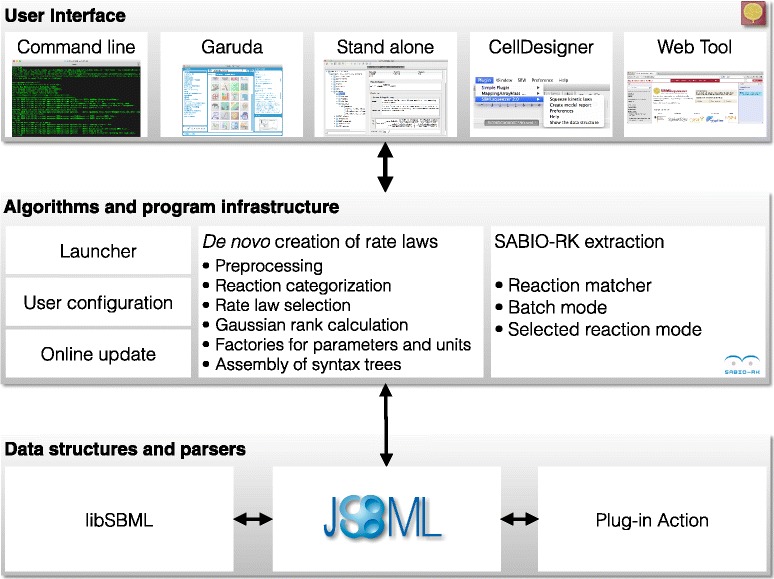Fig. 1.

Architecture of SBMLsqueezer 2. An important design principle of the program is to be compatible with various frameworks. To this end, the program is modularized in three layers. The first layer is the user interface. This layer allows users to utilize the program in multiple ways, including a stand alone version with an own GUI that can also be launched from Garuda’s dashboard [24], a fully featured command-line interface, as a plugin of CellDesigner [21], or as an online program in Galaxy [22]. The web version of the program enables users to easily build complex workflows with other programs in the Galaxy framework. Similar pipelines can be achieved when using SBMLsqueezer as a Garuda gadget. No matter how the program is launched, each mode has access to the identical algorithms and program infrastructure in the second layer. The only exception is that the SABIO-RK [10] has been deactivated in the CellDesigner plugin because CellDesigner provides its own module for this purpose [8]. For software developers, this second layer can be accessed directly through its API. Hence, the algorithms can be embedded in more complex processes and be used as a module in third-party programs. The third layer contains the data structures. SBMLsqueezer highly relies on the library JSBML [18] for model representation. When being used as a plugin from CellDesigner or with libSBML [20] as model parsing and writing engine, an additional synchronization step is required: In both cases all data structures that the program receives from either CellDesigner or libSBML are mapped to a corresponding JSBML representation. All changes made by the program must then be reported to the original source
